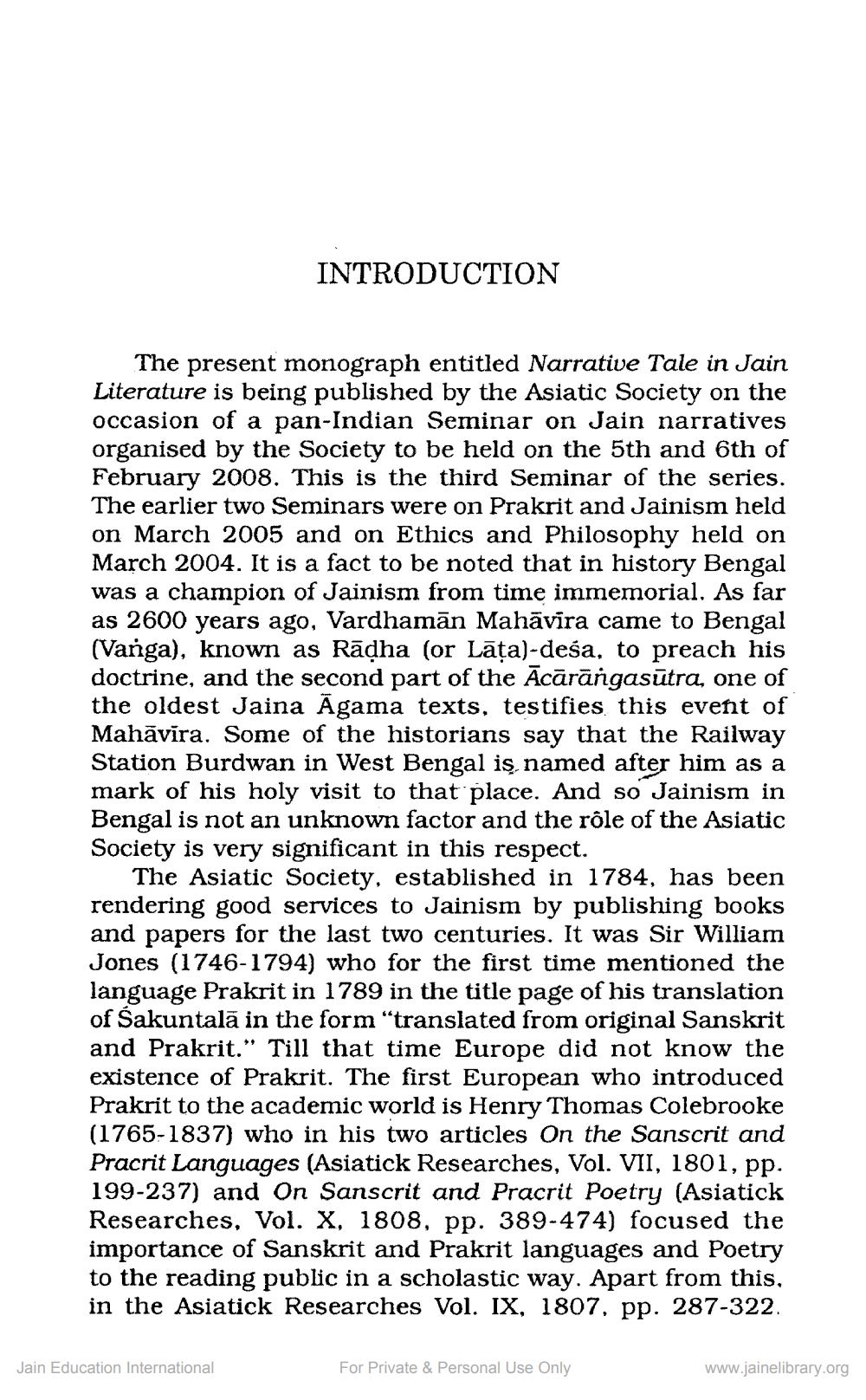Book Title: Narrative Tale in Jain Literature Author(s): Satyaranjan Banerjee Publisher: Asiatic Society View full book textPage 8
________________ INTRODUCTION The present monograph entitled Narrative Tale in Jain Literature is being published by the Asiatic Society on the occasion of a pan-Indian Seminar on Jain narratives organised by the Society to be held on the 5th and 6th of February 2008. This is the third Seminar of the series. The earlier two Seminars were on Prakrit and Jainism held on March 2005 and on Ethics and Philosophy held on March 2004. It is a fact to be noted that in history Bengal was a champion of Jainism from time immemorial. As far as 2600 years ago, Vardhaman Mahāvira came to Bengal (Varga), known as Rādha (or Lāța)-desa, to preach his doctrine, and the second part of the Ācārāngasūtra, one of the oldest Jaina Āgama texts, testifies this event of Mahāvira. Some of the historians say that the Railway Station Burdwan in West Bengal is named after him as a mark of his holy visit to that place. And so Jainism in Bengal is not an unknown factor and the role of the Asiatic Society is very significant in this respect. The Asiatic Society, established in 1784, has been rendering good services to Jainism by publishing books and papers for the last two centuries. It was Sir William Jones (1746-1794) who for the first time mentioned the language Prakrit in 1789 in the title page of his translation of Sakuntalā in the form "translated from original Sanskrit and Prakrit.” Till that time Europe did not know the existence of Prakrit. The first European who introduced Prakrit to the academic world is Henry Thomas Colebrooke (1765-1837) who in his two articles on the Sanscrit and Pracrit Languages (Asiatick Researches, Vol. VII, 1801. pp. 199-237) and On Sanscrit and Pracrit Poetry (Asiatick Researches, Vol. X, 1808, pp. 389-474) focused the importance of Sanskrit and Prakrit languages and Poetry to the reading public in a scholastic way. Apart from this, in the Asiatick Researches Vol. IX, 1807, pp. 287-322. Jain Education International For Private & Personal Use Only www.jainelibrary.orgPage Navigation
1 ... 6 7 8 9 10 11 12 13 14 15 16 17 18 19 20 21 22 23 24 25 26 27 28 29 30 31 32 33 34 35 36 37 38 39 40 41 42 43 44 45 46 47 48 49 50 51 52 53 54 55 56 57 58 59 60 61 62 63 64 65 66 67 68 69 70 71 72 73 74 75 76 77 78 79 80 81 82 ... 162
